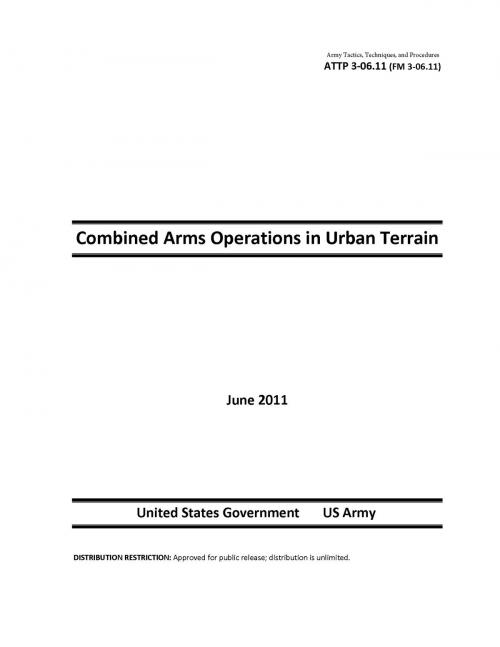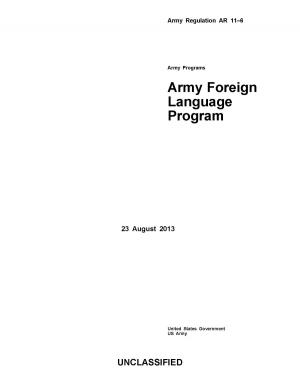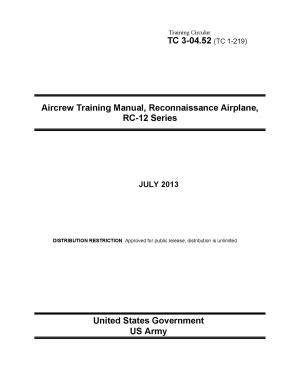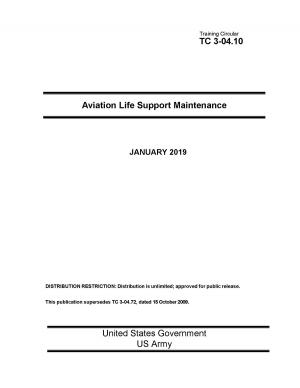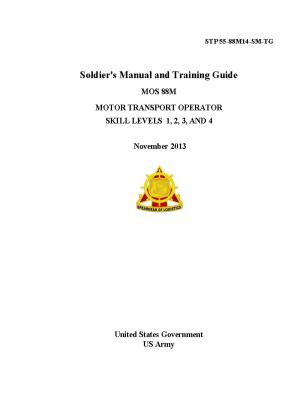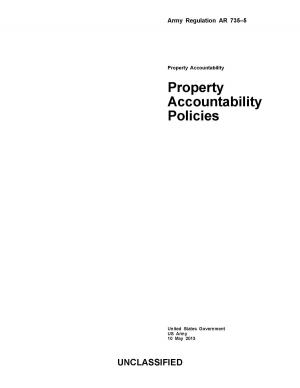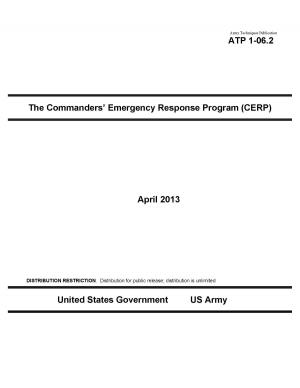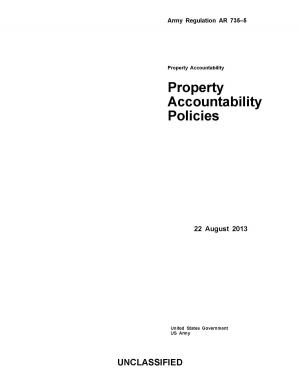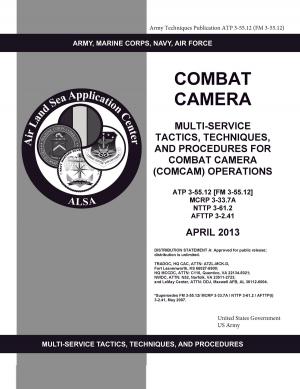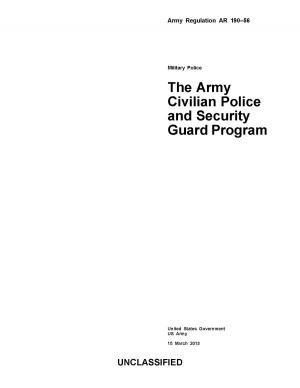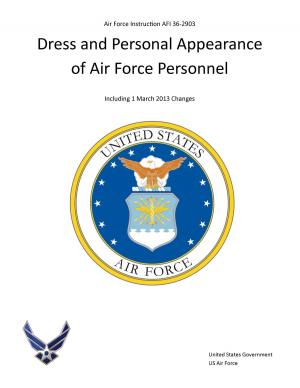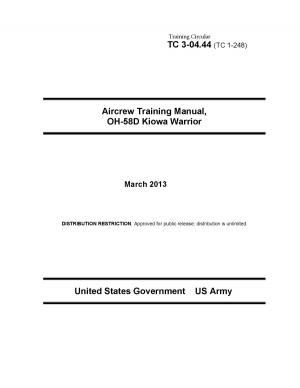Army Tactics, Techniques, and Procedures ATTP 3-06.11 (FM 3-06.11) Combined Arms Operations in Urban Terrain
Nonfiction, Reference & Language, Study Aids, Graduate & Professional, Armed Forces, Science & Nature, Technology, Military Science, Reference, Guides & Handbooks| Author: | United States Government US Army | ISBN: | 1230000118574 |
| Publisher: | eBook Publishing Team | Publication: | May 1, 2013 |
| Imprint: | Language: | English |
| Author: | United States Government US Army |
| ISBN: | 1230000118574 |
| Publisher: | eBook Publishing Team |
| Publication: | May 1, 2013 |
| Imprint: | |
| Language: | English |
Army Tactics, Techniques, and Procedures (ATTP) 3-06.11 establishes doctrine for combined arms operations in urban terrain for the brigade combat team (BCT) and battalion/squadron commanders and staffs, company/troop commanders, small-unit leaders, and individual Soldiers.
The continued trend worldwide of urban growth and the shift of populations from rural to urban areas continues to affect Army operations. The urban environment, consisting of complex terrain, dense populations, and integrated infrastructures, is the predominant operational environment in which Army forces currently operate.
Each urban environment is unique and differs because of the combinations presented by the enemy, the urban area itself, the major operation of which it may be part (or the focus), and always changing societal and geopolitical considerations. Enemy forces will take advantage of this complex environment by intermingling with the populace.
ATTP 3-06.11 describes the fundamental principles, tactics, techniques, and procedures (TTP) of urban operations (UO) across full spectrum operations, using the UO operational construct (understand, shape, engage, consolidate, and transition) to outline the discussions. ATTP 3-06.11 is based on current BCT structure and lessons learned from ongoing UO.
ATTP 3-06.11 primarily addresses offensive and defensive operations in an urban environment. Stability operations are briefly discussed in the context of transition considerations. Stability operations are inherently among the people and generally in urban environments. Field manual (FM) 3-07 is the source manual for stability doctrine and addresses BCT considerations for conducting stability UO. FM 3-07.1 is the primary source for BCT and below considerations for interaction and support to host nation (HN) security forces. This material is not repeated in ATTP 3-06.11.
This publication applies to the Active Army, the Army National Guard (ARNG)/Army National Guard of the United States (ARNGUS), and the United States Army Reserve (USAR) unless otherwise stated.
The proponent for this publication is the U.S. Army Training and Doctrine Command (TRADOC). The preparing agency is the U.S. Army Maneuver Center of Excellence (MCoE).
Urban operations are among the most difficult and challenging missions a BCT can undertake. Most UO are planned and controlled at division or corps level but executed by BCTs. The unified action environment of UO enables and enhances the capabilities of the BCT to plan, prepare, and execute offensive, defensive, and stability operations. Urban operations are Infantry-centric combined arms operations that capitalize on the adaptive and innovative leaders at the squad, platoon, and company level. Combined arms is the synchronized and simultaneous application of the elements of combat power to achieve an effect greater than if each element of combat power was used separately or sequentially. The eight elements of combat power are leadership, information, movement and maneuver, intelligence, fires, sustainment, mission command, and protection. Leadership and information are applied through, and multiply the effects of, the other six elements of combat power. These six–movement and maneuver, intelligence, fires, sustainment, mission command, and protection–are collectively described as the warfighting functions. (See FM 3-0 for details.) The BCT is the Army’s largest fixed combined arms organization and the primary close combat force. A key component in UO is the inherent ability of the BCT to tailor its force to meet the requirements of the urban environment. This introduction provides an overview of UO considerations that shape the subsequent discussions of operations at BCT and below.
Army Tactics, Techniques, and Procedures (ATTP) 3-06.11 establishes doctrine for combined arms operations in urban terrain for the brigade combat team (BCT) and battalion/squadron commanders and staffs, company/troop commanders, small-unit leaders, and individual Soldiers.
The continued trend worldwide of urban growth and the shift of populations from rural to urban areas continues to affect Army operations. The urban environment, consisting of complex terrain, dense populations, and integrated infrastructures, is the predominant operational environment in which Army forces currently operate.
Each urban environment is unique and differs because of the combinations presented by the enemy, the urban area itself, the major operation of which it may be part (or the focus), and always changing societal and geopolitical considerations. Enemy forces will take advantage of this complex environment by intermingling with the populace.
ATTP 3-06.11 describes the fundamental principles, tactics, techniques, and procedures (TTP) of urban operations (UO) across full spectrum operations, using the UO operational construct (understand, shape, engage, consolidate, and transition) to outline the discussions. ATTP 3-06.11 is based on current BCT structure and lessons learned from ongoing UO.
ATTP 3-06.11 primarily addresses offensive and defensive operations in an urban environment. Stability operations are briefly discussed in the context of transition considerations. Stability operations are inherently among the people and generally in urban environments. Field manual (FM) 3-07 is the source manual for stability doctrine and addresses BCT considerations for conducting stability UO. FM 3-07.1 is the primary source for BCT and below considerations for interaction and support to host nation (HN) security forces. This material is not repeated in ATTP 3-06.11.
This publication applies to the Active Army, the Army National Guard (ARNG)/Army National Guard of the United States (ARNGUS), and the United States Army Reserve (USAR) unless otherwise stated.
The proponent for this publication is the U.S. Army Training and Doctrine Command (TRADOC). The preparing agency is the U.S. Army Maneuver Center of Excellence (MCoE).
Urban operations are among the most difficult and challenging missions a BCT can undertake. Most UO are planned and controlled at division or corps level but executed by BCTs. The unified action environment of UO enables and enhances the capabilities of the BCT to plan, prepare, and execute offensive, defensive, and stability operations. Urban operations are Infantry-centric combined arms operations that capitalize on the adaptive and innovative leaders at the squad, platoon, and company level. Combined arms is the synchronized and simultaneous application of the elements of combat power to achieve an effect greater than if each element of combat power was used separately or sequentially. The eight elements of combat power are leadership, information, movement and maneuver, intelligence, fires, sustainment, mission command, and protection. Leadership and information are applied through, and multiply the effects of, the other six elements of combat power. These six–movement and maneuver, intelligence, fires, sustainment, mission command, and protection–are collectively described as the warfighting functions. (See FM 3-0 for details.) The BCT is the Army’s largest fixed combined arms organization and the primary close combat force. A key component in UO is the inherent ability of the BCT to tailor its force to meet the requirements of the urban environment. This introduction provides an overview of UO considerations that shape the subsequent discussions of operations at BCT and below.
